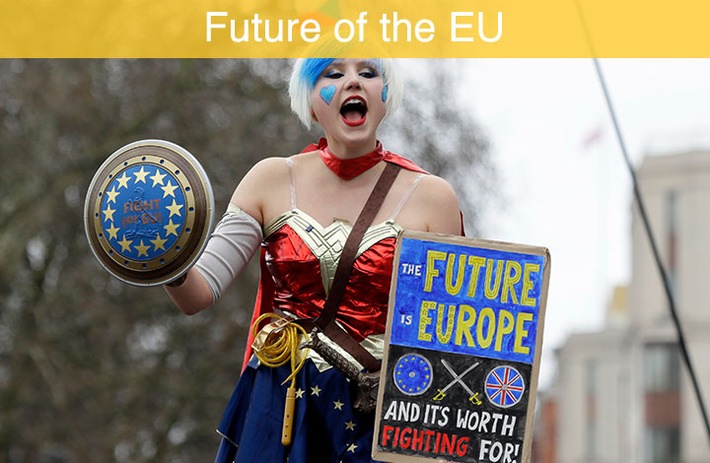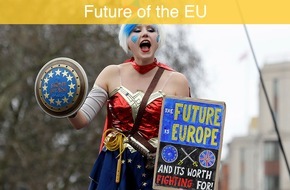The euro crisis, the migrant crisis, the rise of nationalist parties in numerous member states and last, but not least Brexit - over the past few years, the European Union has been in a more or less perpetual state of emergency. As a result, many within the bloc have been thinking about the future, pondering various approaches to reform. An overview:
The EU Commission's white paper
In March 2017, less than a year months after the British public voted in a referendum to leave the EU, European Commission President Jean-Claude Juncker presented a white paper outlining five possible scenarios for the bloc's post-Brexit evolution. The first scenario, entitled "carrying on", does not foresee any serious changes. Under the headline "nothing but the single market", the white paper envisions the reduction of central political and social aspects of the EU until little more than the single market remains. The third scenario, called "those who want more do more", foresees a "Europe of two speeds", with closer cooperation of some individual member states in certain policy areas. Under the slogan "doing less more efficiently", the EU would concentrate on certain key policy areas and make decisive contributions to shaping them. Under the fifth scenario, called "doing much more together", the individual EU states would transfer more powers to the bloc.
The "United States of Europe"
In February 2017, the European Parliament adopted three resolutions on the future of the EU. They include a number of radical changes not only to the EU itself, but also to its underlying treaties and the Eurozone. The former Belgian Prime Minister and Chairman of the Liberal ALDE group in the European Parliament, Guy Verhofstadt, presented plans for a "United States of Europe". Among other things, he wants to significantly reduce the size of the European Commission and adapt its role to that of a government of the bloc. He also argues for the creation of a second parliamentary chamber with representatives of the member states to replace the bloc's various councils as well as a strengthening of the EU's common foreign policy. Implementing the ideas would require a reform of the Lisbon Treaty, something the proposals by the German MEP Elmar Brok could be realized without. Brok also wants to transform the Council of Ministers into a "genuine second legislative chamber". He is also calling for a European "Finance Minister". The third resolution suggests plans for strengthening the Eurozone with the aim of bringing the euro area economies closer together and making them more resilient to outside shocks. Among other things, it proposes a "fiscal capacity" with its own budget, a European Monetary Fund and a "convergence code".
The Member States
More recently, Emmanuel Macron argued for comprehensive reforms in the EU in early March 2019. In addition to an EU-wide minimum wage, improved border protection and a European asylum authority, the French president called for an agency for the protection of democracy, a ban on the financing of European political parties by "foreign powers", a stricter approach to companies that do not comply with European rules and a European climate bank. The reaction of German Chancellor Angela Merkel was somewhat reserved. In the past, she had promoted a "Europe of different speeds" and suggested a purge of the many rules of the internal market. Her line also has the support of the Benelux countries. But there are also more radical approaches. Slovenia, for example, has presented a draft of an EU constitution.
[Attention: These images are intended exclusively for editorial use in connection with the current coverage and may be used only when using the copyright notice "Photo: dpa".]


